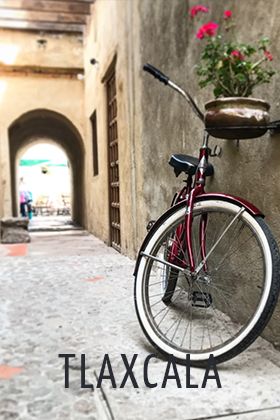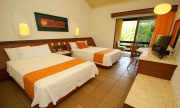About Merida
by: Travel by México

About Merida
by: Travel by México
Before the arrival of the Spanish, this territory was known as the ancient Maya city of T’ho or Ichcaansiho, which means “Face of the infinite”.
It is true that you can still see many vestiges of the past, pre-Hispanic ruins that have become some of the most important historical and cultural attractions in the state of Yucatan. But if we are talking about Merida, “The White City or The White Merida,” it is a story that begins with its founding in 1542 by Francisco de Montejo El Mozo , who named the city in this way because of the amazing Mayan temples and shrines that reminded the Spaniards of the Roman style masonry buildings that were raised in the other Merida, Spain. The center of town was designated as the main square, which is known today as the Plaza Grande.
In the west there were two neighborhoods for the indigenous, that of Santiago and Santa Catarina, and on the east, San Cristobal for highland indigenous, and to the north, Santa Lucia, where the blacks and mulattos lived. Downtown, near the plain, rose the main civil and religious buildings, and the royal houses to house the rulers, captains, and generals that were sent from Spain, as well as the council building for the appointed government authorities, and the main church, which later would come to be replaced by the Cathedral.
Among the traditional buildings that make up the historic center, there are: the Cathedral of San Ildefonso, the oldest in the Americas and built with quarry stones from the destroyed Mayan temples, which inside houses the world’s largest indoor Christ; The Casa Montejo (The Montejo House) known for it’s excellently preserved condition despite the passing of time, and for the plateresque art in the architecture and the variety of styles it contains including heavy indigenous influences; The indigenous neighborhoods like Santa Ana on the north, and the others formerly mentioned, that developed alongside with the forming of the city, leaving behind the original traces of the settlement; And the three doors or arches (San Juan, Dragons and the Bridge) of the seven that formerly defined the city borders on one side, and on the other side signaled the separation of the neighborhoods between that of the Spanish and the indigenous. Merida transformed in the late 19th century.
The increasing economic development and the henequen boom of the era, created a flood of construction of imposing estates, public buildings, theaters, hospitals, schools, social clubs and beautiful European-style mansions that still adorn many avenues in the city.
And one of those avenues has certainly become one of the most important attractions of the area, the Paseo de Montejo (Montejo Drive), lined with elegant and exquisite architecture. The avenue contains important highlights such as the Palacio Canton (Canton Palace) done in an exquisite Italian Renaissance style, which was converted into the Museo de Antropologia e Historia (Museum of Anthropology and History), that houses an important collection of pre-Hispanic cultural heritage and history related to the city; and the Monumento a la Patria (Monument to the Homeland), that through amazing carved stonework depicts the history of Yucatan and the rest of the country.
Merida, The White City, has many more attractions such as parks, fountains and gardens that are filled with flavor, light and color by day, and by night are transformed into places where carriages promenade the streets, terraces invite you to a good conversation while savoring a coffee, and where folklore and the music of trova delight visitors with its wit and romance. From Merida, you can get to other important villages, archaeological sites, haciendas and beaches like: Valladolid “The Pearl of the East”, Izamal “The City of Three Cultures”, Chichen Itza “The City of the Itza”, Ek’Balam “Black Jaguar”, Uxmal “Three Times Built”, The Puuc Route or Route of the Gods, Dzibilchaltún “Where there is writing on the stones”, Mayapan “The Walled City”, Xcanatún, San Antonio Cucul, San Jose Cholul, Kancabchén, San Ildefonso Teya, Petac, Temosón South, Santa Rosa de Lima, Yaxcopoil, Ochil, Progreso, Telchac, Sisal ... and still others.
This is where we find architectural gems, the Emerald Coast, and the natural beauties with all their wonder and splendor. And where magical craft creations like guayabera clothing and hammocks, and the flavor of the Yucatan cuisine, are as much a part of the tradition as a good night of Yucatecan Serenades.
Be welcomed to this culture!
r09



















